To a naked eye, University Avenue doesn't look like the city's latest battleground.
The sidewalks bustle, the coffee shops buzz and digital Apples gleam from seemingly every table. Vacancies, a looming menace just three years ago, are now almost nonexistent (or, at a rate of about 2 percent, mostly irrelevant). New restaurants are opening every month, rent prices are among the highest in the nation and applications to construct major new "gateway" buildings are filing in at a rapid pace.
The rest of America may still be shaking off the economic hangover from the Great Recession, but downtown Palo Alto is fully awake. According to a new report from the City Auditor's Office, the city's sales-and-use tax revenues increased by 8 percent between the second quarter of 2011 and the second quarter of 2012 (which ended in June). In the downtown area, sales-tax revenues have gone up steadily since the second quarter of 2010, rising gradually from $2.5 million to $3 million in the second quarter of 2012.
The city's most recent downtown-vacancy report, which was released in February 2011, stated that while the effect of the economic slowdown is still evident, "economic conditions have improved since October of 2009." According to the report, the vacancy rate in the blocks zoned as "commercial downtown" was about 2.6 percent in late 2010.
City officials believe the vacancy rate has since slid down to about 2 percent. Prominent newcomers include the bakery chain La Boulange on University and High Street; the home-furniture store Inhabiture on Ramona Street; and the Apple Store, which relocated from the corner of University and Kipling Street to a larger location two blocks west.
"It's pretty safe to say that we've moved the vacancy rate much lower than where it was during that report," Thomas Fehrenbach, the city's economic development manager, said during a recent interview. "A number of spaces have come online that have been vacant for some time. Generally, the climate is pretty robust at this point."
Anecdotal evidence confirms that the market has heated up in the last two years, said City Manager James Keene.
"In some of the conversations I've been having with people on the street, people were saying in 2011 that they thought things were very hot," Keene told the Weekly. "Some people said it feels hotter than it did in the dotcom boom, even."
And yet the area's recent and expected growth is also prompting serious head scratching and heated disagreement in City Hall these days. With downtown residents lamenting the loss of parking on their blocks and massive downtown office projects rolling through the pipeline, many fear that the onrush of development will change the character of the city for the worse. At last week's City Council meeting, Planning Director Curtis Williams said the area is "suffering from its own success" when it comes to downtown parking. In letters and public comments, residents routinely decry downtown's urbanization and complain about traffic congestion and parking shortages.
One resident, Colleen Backstrand, wrote in a letter to the council earlier this month that after 25 years away, she returned to Palo Alto and discovered her "small town has turned (into) a city with parking issues, traffic, crime." Another resident, Amy Kacher, criticized a downtown office complex proposed by billionaire developer John Arrillaga, saying the development which includes four office towers will be an "eyesore" that will "eclipse the heritage of our historic downtown area."
The debate over downtown growth has dominated recent meetings of the City Council and Palo Alto's land-use boards. The council spent the bulk of its November meetings discussing ways to protect downtown retail spaces from being converted to offices and to revise parking regulations to better meet the demand, a hot topic among downtown neighborhoods. The Planning and Transportation Commission earlier this month weighed the pros and cons of abandoning the city's 50-foot height limit for new buildings, a bedrock protection for slow-growth proponents. And the Architectural Review Board spent most of its Nov. 15 meeting discussing the proposed designs for two new downtown developments -- one at 135 Hamilton Ave. and another one at 636 Waverley St. -- each of which would be four-stories high, largely filled with offices.
At the same time, the city is wrestling with broader questions about downtown growth. Last week, the council directed staff to hire consultants to perform two studies. One will gauge demand for parking downtown and evaluate the need and options for new garages. The other, known as the "downtown-cap study" will assess the recent and projected volume of downtown development and help determine just how much more growth the area can accommodate.
In addition to these long-term studies, Palo Alto officials are pursuing more immediate changes to stem an unintended transformation of downtown's character. Earlier this month, the City Council agreed to revise the downtown zoning code to require ground-floor retail at an Emerson Street block. The council also on Monday approved a moratorium on a parking exemption for downtown developers -- an exemption that was created in 1986 as an incentive for building in the area. City officials agreed that this type of incentive isn't necessary in today's sizzling real-estate climate, particularly given downtown's parking problems.
"Those are policies from another day, and I think today's downtown needs to be looked at much differently," Keene said. "The city realizes that the parking impacts on neighborhoods are real and significant, and we do mean business when we talk about how we're going to address that issue."
---
The debate over downtown growth reflects, in many ways, the two-sided nature of University Avenue. The active commercial strip is one of the major technological landmarks of Silicon Valley, a place where companies like Google and Facebook reached adolescence before moving on to larger headquarters elsewhere. It's a regional destination for the types of hip, design-conscious technophiles who work at IDEO, get their drip coffee at Philz, and seek happiness at the Apple Store. It's a critical part of downtown Palo Alto's cosmopolitan feel and global reputation as a nurturer of small startups and an incubator of big ideas.
"It's a place where someone can come with an idea, connect with people who can launch that idea into a business, connect with the right type of sources -- lawyers, bankers -- and at the same time be located at a place with so many amenities on the ground floor," Fehrenbach said.
Among the most visible and ambitious newcomers is Talenthouse, which opened in 2010. A startup that perfectly encapsulates Palo Alto's flair for design and technology, Talenthouse occupies a spacious loft on High Street, a block south of University. A social hub for creative types, it boasts a community of 1.7 million and was the brainchild of English music producer Amos Pizzey and entrepreneur Roman Scharf.
Talenthouse applies crowdsourcing techniques to the fields of design and advertising. A client can request a track remix, an event logo or a T-shirt design, and the artists in the company's growing social hub will get to work and present their submissions.
Talenthouse's goal, quite simply, is to change the advertising industry. In an interview in July, Scharf griped about the ineffectiveness of the prevalent advertising modes -- pop-ups, banners, video commercials -- which interrupt the user's experience. Talenthouse's model, by contrast, allows the brand to target the creative class more directly and less intrusively. Artists in Talenthouse's network sponsor each other's work on various campaigns and, through their social networking, spread the brand's message. Scharf said that the company's community of artists has worked on campaigns for clients such as Paul McCartney, U2 and Stan Lee.
"Talenthouse is not a participant in the existing boxes of media," Scharf said. "It's a new box."
On March 31, the company co-hosted Palo Alto's daylong Hackathon, a street festival that was part software-coding party and part celebration of the area's reputation as the Mecca for technological innovation. Masses took over the High Street block to bop with headphones on to "silent" disco, meet the next Steve Jobs and code their hearts out. Other sponsors of the event included Innovation and Endeavors, a venture-capital firm founded by Google president Eric Schmidt and the City of Palo Alto.
Downtown's innovation isn't limited to tech start-ups. LYFE Kitchen, a brainchild of former McDonald's president Mike Roberts, recently opened on Hamilton Avenue, the first of what he hopes will be hundreds of restaurants. Like the svelte, health-conscious techies who patronize it, the all-organic, super-sustainable LYFE aims to transform an industry -- in this case, fast food. As Roberts told Wired magazine earlier this year, "We're in the middle of the first stage of the food revolution."
Palo Alto's leaders encourage this sort of ambition. Keene said one of his concerns when it comes to downtown is the steep retail rents, which make it hard for cutting-edge restaurants to afford space on University Avenue.
"Palo Alto should be the food center for the Peninsula in the same way that we're the creative center for technology," Keene said. "We have the demographics and the demand that would support these sorts of things."
But for all the talk of regional prestige and global leadership, University Avenue also serves an important local, age-old function. Since Palo Alto's founding, the strip has served as the city's civic backbone, a destination for residents looking to do their shopping, catch up on local news and chat up their favorite merchants. If Talenthouse and the new Apple store represent one side of downtown Palo Alto, venerable downtown establishments such as Bell's Books, Max's Smoke Shop and President Barbershop represent the other.
"It's not a faux, fabricated, redeveloped downtown," Keene said, referring to downtown's traditional role. "That's one of the real appeals that it has. University Avenue is a real street for people."
It is this quality, often referred to as "historic character," that critics of the proposed developments refer to when they talk about the need to limit growth. And it is this quality that area residents invoke when they rage about downtown workers flooding residential neighborhoods with their cars. The argument evokes Palo Alto's land-use wars of the 1960s and 1970s, when pro-growth "establishment" leaders battled the city's "residentialists," who argued that new developments were degrading the city's quality of life.
Though the two sides ultimately reached a "slow growth" consensus in the late 1970s, residentialist critiques are re-emerging these days as new office developments wind their way through the city's planning process, threatening to further change the face and feel of downtown.
Karen Dreyfus, a Professorville resident, was one of several speakers at the Nov. 13 council meeting on parking.
"As the council is balancing the interests of businesses, developers and residents, I think it's very important to note that the residents, even in the best-case scenario, have already contributed and are compromising, whatever the result is," Dreyfus said.
---
Most city leaders see downtown's growth as generally desirable and more or less inevitable, though there has been some debate about how much development the area can accommodate.
"Additional office space in the downtown can actually continue to feed retail in a vibrant downtown life, but we clearly have to manage the impacts of that, with the two most immediate impacts being parking and traffic," Keene said.
Russ Cohen, executive director of the Downtown Business and Professionals Association, agreed new office development could be good for downtown because it would supply customers to downtown merchants.
"What you have with that office space is an installed base of customers," Cohen said. "Other cities have to promote and advertise and recruit people to come down and visit downtown. We have to do it, but we also have so many workers coming to patronize our businesses."
Michael Alcheck, a city planning commissioner, made a similar point at a recent meeting when he marveled at the fact that there's about a half dozen frozen yogurt shops.
"It's an unbelievable thing that there's six or seven yogurt shops," he said. "That offering exists because of the density we have here for the workforce."
In recent discussions of Arrillaga's proposed project at 27 University Ave., opinions among city officials and downtown residents have ranged widely. Staff have largely focused on what they see as the project's considerable benefits, most notably Arrillaga's proposal to improve the circulation around the Caltrain station by transforming the confusing labyrinth that exists there today into a two-block plaza lined with bike paths and pedestrian amenities. In a September hearing on the project, Deputy City Manager Steve Emslie called the city's potential partnership with Arrillaga an "exciting opportunity" and the proposal a "bolder one than anything anyone has proposed in recent memory."
Others were far more subdued. Councilman Pat Burt, while noting that the Arrillaga complex could have "tremendous community benefits," said the buildings in the proposal are far too big. He urged his colleagues to couple their support for exploring this project with a fresh commitment to the city's 50-foot height limit.
Planning commissioners have also been ambivalent about abandoning the height restriction. Some, like Alcheck and Mark Michaels, said they would be open to taller buildings in select locations, particularly near the city's transit hubs. Alcheck argued at the Oct. 26 meeting on 27 University Ave. that there is "no location that is closer to transit, closer to El Camino Real, that is more apt for the tallest building we've ever considered.
"If we're going to do it, we ought to shoot for the stars here," Alcheck said.
Others have been more skeptical of big buildings and more offices.
Bob Moss, a land-use watchdog and frequent critic of major developments, finds the addition of large office buildings -- and hundreds or thousands of jobs -- problematic at a time when the city has a jobs-to-housing ratio estimated at about three-to-one. Over the past three years, city officials have been protesting to the Association of Bay Area Governments (ABAG) that Palo Alto is already a "built-out city" and cannot accommodate the volume of housing that ABAG is calling for. But as Moss pointed out in a public meeting earlier this year, such an argument is harder to make when developers are adding large office buildings downtown.
In discussing Arrillaga's proposal specifically, Commissioner Arthur Keller said that if he wanted to move back to Manhattan, his former home, he'd do so. People in Palo Alto, he said, "made a deliberate step not to have Palo Alto be Manhattanized" when they passed the various development restrictions in the 1970s and 1980s.
Many downtown residents share Keller's view. Martin Sommer, who lives at a condominium building between Alma and High streets, argued that Arrillaga's proposed buildings would kill his and his neighbors' view of the Santa Cruz Mountains and bring down their real-estate values. His online petition to stop the project and to oust the council members who ignore the city's 50-foot height limit has received 137 signatures as of last week.
"People are getting angry about these proposed buildings," Sommer told the council on Sept. 24.
Residents could ultimately have a say on this project. On Dec. 3, the City Council is tentatively scheduled to discuss a ballot measure that would let voters opine on Arrillaga's proposal. Voters would need to approve a swap of parkland (El Camino Park is adjacent to 27 University) and also the change of zoning from "public facility" and "planned community" to a brand-new designation accommodating the office towers and theater complex. The election will be as good a test as any for whether the community's slow-growth consensus of the late 1970s is still alive.
---
While some rail about the increase of office space and argue that the Arrillaga development will lead to further deterioration of downtown's traditional character, Keene said that whatever height exceptions might ultimately be allowed for 27 University would not apply to any other projects. The city, he said, is not proposing to scrap height limits elsewhere downtown.
"I want to make it very clear that from the staff perspective, we do not see, going forward, making changes across the board on the height limit we have," Keene said. "Any discussion on 27 University that would look at heights, it would be treated as a distinctive, one-of-a-kind location for looking at that issue. It's a question that's on a lot of people's minds. As we get a development application submitted, we'll work through that issue and process in a very public way."
The Arrillaga proposal has arrived at a time when the city is juggling at least three other major downtown developments, all of which are primarily office buildings. In May, the council approved the construction of a four-story "gateway" building on the former Shell gas-station site on Lytton Avenue and Alma Street. The council backed the project after ensuring that the developers would pay for a parking study and contribute close to $2 million toward future parking improvements such as a new garage -- a nod to concerns from Downtown North neighborhood residents. Once built, the glassy Lytton Gateway would occupy a prominent corner next to the downtown Caltrain station and would include as part of its design a 70-foot-high corner tower.
The "gateway" concept is also touted in an application by prominent developer Charles "Chop" Keenan for a four-story building at 135 Hamilton Ave. Keenan hopes to turn what's currently a parking lot into a mixed-use development, again predominantly office space. (He also plans to bring offices and some ground-floor retail to the Varsity Theatre building on University Avenue that, until recently, housed Borders Books.) The Hamilton Avenue development would feature about 20,000 square feet of commercial space and two residential units.
The city's Architectural Review Board discussed Keenan's project at its Nov. 15 meeting. After commenting on the proposed design, members moved on to another downtown proposal -- an application by David Kleiman for a four-story building, with two floors of office space and two floors of residential, at 636 Waverley St. (the board didn't vote on either project).
Kleiman told the board that in designing the four-story building on the peripheral downtown block, he was considering what the block will look like "very soon" -- taller, busier and more urban.
"Think of what's only a block away on Hamilton Avenue," he told the board. "All the buildings come right up to the sidewalk and they're similar in character to this. They're 30-, 40-, 50-feet tall.
"I think once the building is built and the building next door -- it's in design -- is built, it will establish Waverley as much more urban and, frankly, the type of street that has heavier use and a much taller character than exists today."
All three of these projects, however, are overshadowed by Arrillaga's mammoth proposal to create a new "arts and innovation district" with four office towers and a performance theater, which would be occupied by TheatreWorks. In the initial proposal, the office towers ranged from seven to 11 stories in height, with the tallest rising to 161 feet (after criticism about the project's massive scale, the city on Wednesday released Arrillaga's revised plans, which showed the highest tower at 103 feet). The concept, which has yet to be presented as a formal application, also includes a complete redesign of the busy transit hub between downtown and Stanford University. The redesigned hub would include a host of bike and pedestrian connections, including a new underpass at Lytton Avenue, and more space for buses.
Even without the Arrillaga proposal, the new applications are pushing downtown development beyond the 235,000-square-foot threshold lawmakers had in mind in 1986.
---
New office developments are just one major downtown issue Palo Alto is wrestling with these days. A more vexing and urgent concern is the conversion of existing retail buildings to office use.
Earlier this month, the council considered a colleagues' memo from Vice Mayor Greg Scharff, Councilwoman Karen Holman and Councilman Greg Schmid, who proposed zoning changes to protect retail from office conversions. Scharff noted that office rent on University Avenue today is as high as $7.50 per square foot (compared to $5.50 in late 2010, according to city data). Retail rent is closer to $4 per square foot. "Right now, the office market is incredibly strong, and there's strong economic pressure to convert from retail to office," Scharff said. "So we need to look carefully at where we can lose retail in the downtown."
In the memo, the three council members listed several downtown properties that have recently switched from retail to office space, including the former locations of Fraiche Yogurt, the Blue Chalk CafÈ and Jungle Copy (where Talenthouse now resides). Three years ago, when vacancies were a threat, the council removed a requirement for ground-floor retail from the peripheral downtown blocks where these businesses were located. Scharff, Schmid and Holman urged the council to restore these retail protections as soon as possible.
Things around downtown have "changed dramatically," Schmid said at the Nov. 5 meeting, with office space in particular doing "tremendously well." Scharff agreed.
"This is not something we can take a wait-and-see attitude on," Scharff said. "We lose a few restaurants, they become offices, it's hard to get it back. That's why it's important to get proactive."
Not everyone is convinced that radical change is necessary at this time. Councilman Larry Klein, who has been involved in local politics since the early 1970s and who authored the 50-foot height limit, described today's retail scene as "quite vibrant" and questioned the need for immediate zoning revisions. And Cohen of the Downtown Business and Professional Association argued that it's too soon to reverse the changes the council made in 2009 and warned of "unintended consequences" -- namely vacancies.
But Faith Bell, whose family business, Bell's Books, has been a fixture on Emerson Street for 77 years, said downtown rents are making it hard for small, independent businesses to stay open. The owner of LiveGreene, an eco-friendly gift shop on University Avenue near High Street, plans to close shop later this month and move to Manhattan, Bell told the council. The reason? Rent in one of the priciest areas in the nation is lower than in downtown Palo Alto. The only places independent businesses can go downtown is the side streets, where rent is cheaper, Bell said.
"If you want to shop at Apple, if you want to shop at Subway, if you want to shop at Restoration Hardware, if you want to shop at the Cheesecake Factory or Haagen-Dazs, all of which are chains, they will be on University Avenue. They can afford those rents," Bell said. "If you want to see independent, interesting businesses that are not what you see at Stanford Shopping Center and not what you see in every town in America, you have to protect the small corridors with the small buildings. It's that simple."
The council ultimately decided to restore ground-floor retail protection to the block of Emerson Street between Hamilton and Forest avenues. But members rejected making broader changes at this time, opting to wait until the "downtown cap" study is completed.
---
Downtown's growing pains are expected to dominate City Council meetings for years, as the city proceeds with its parking programs, planning studies and brainstorming over zoning. The result could be the biggest rethinking and modification of downtown zoning laws since the mid 1980s.
But even with the challenges, city officials and downtown leaders are pleased with the current state of affairs. Cohen said the area has withstood economic downturns in the past and has always rebounded, largely on the strength of its reputation as a technological leader.
"There's always been this draw to our downtown, and it has to do with that mix of office-professional space, retail space and restaurants," Cohen said in a recent interview. "I think if you look historically, there have been some ups and downs. There have been times where there's been more vacancies than we have today. But there's always been this draw -- this environment where startups were encouraged and honored. It's pretty fundamental."
Keene agreed and called Palo Alto's downtown the best in the Peninsula. When asked whether the slow-growth consensus that ended the battle between Palo Alto's establishment and residentialists in the late 1970s still stands, Keene said he believes it does. He noted that conversations about growth, density and transit-oriented developments have changed since the 1970s, with a greater focus these days on limiting traffic and encouraging density near transit. But the city's caution about growing too fast holds, he said. The city may be awash in development proposals, but Keene said he doesn't believe these projects will radically change Palo Alto.
"I think there's a willingness to accept that we're a dynamic community and that there will be some changes and some progress," Keene said "But this needs to be aligned with what are the basic Palo Alto values -- which is, quality of life.
"Personally, I don't see a dramatic change going forward occurring in our city."
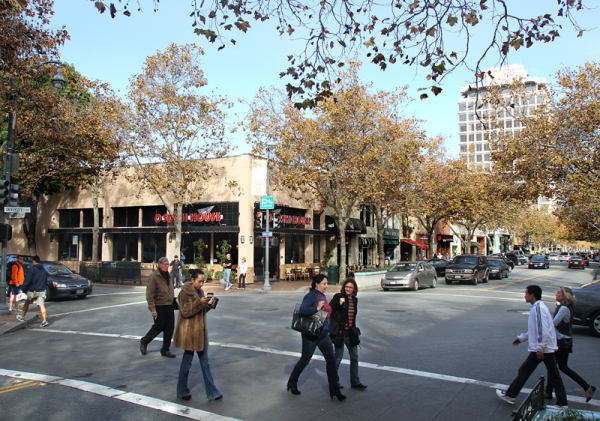
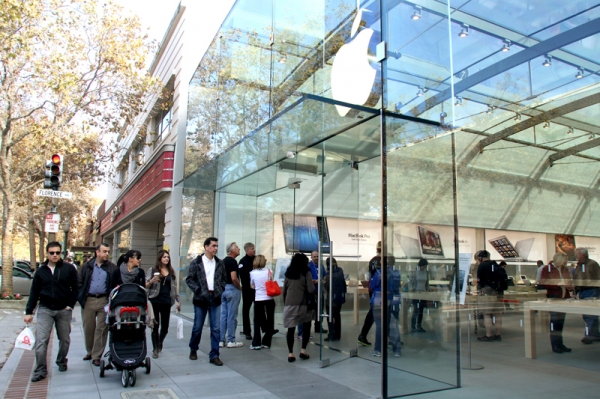
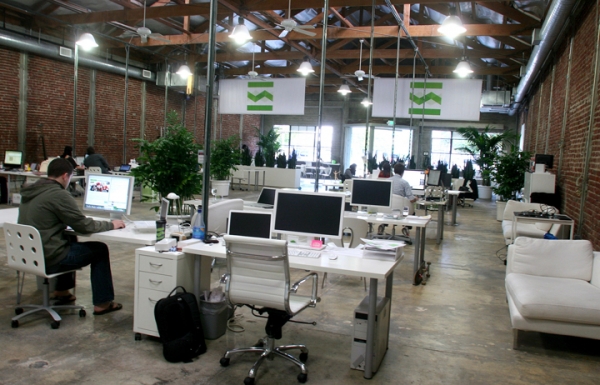
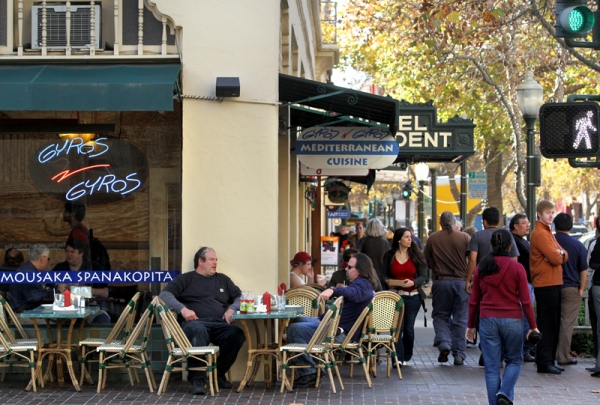
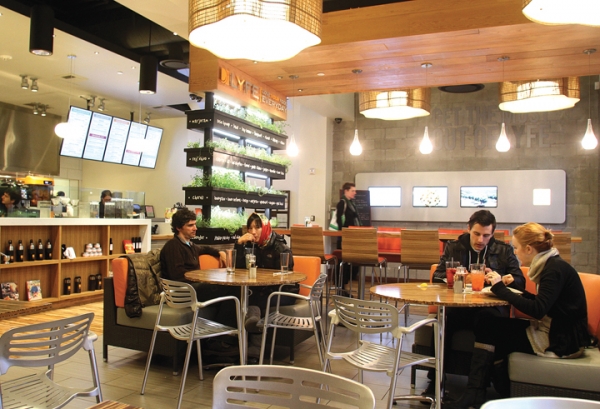
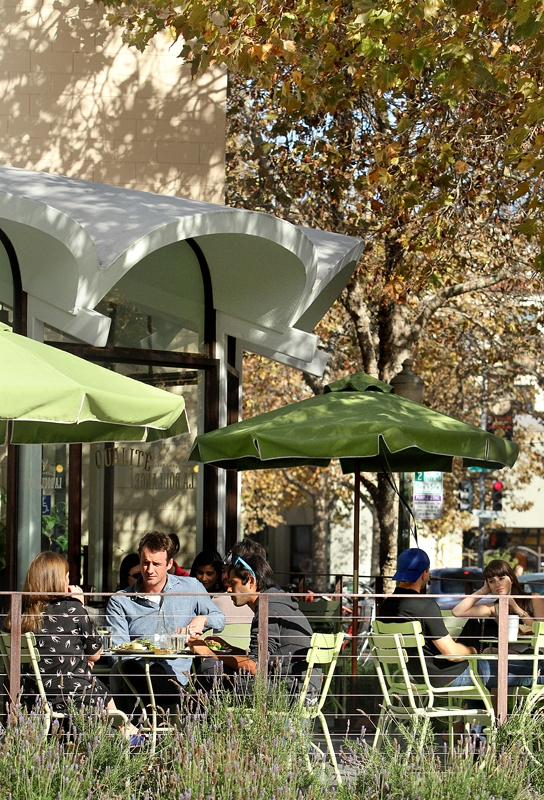
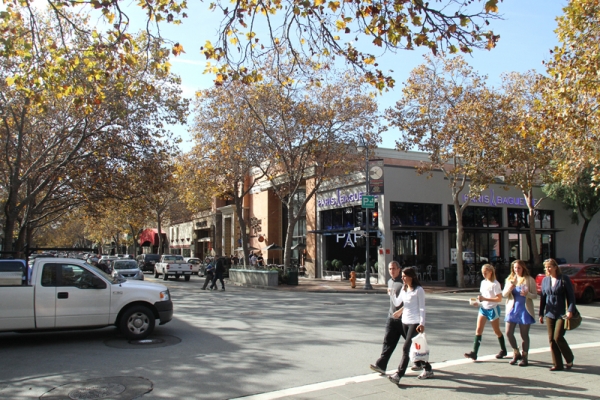
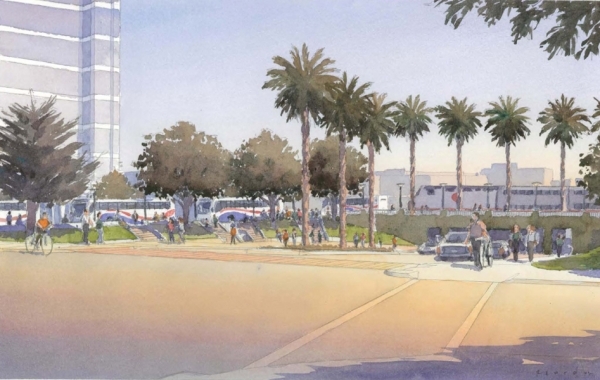
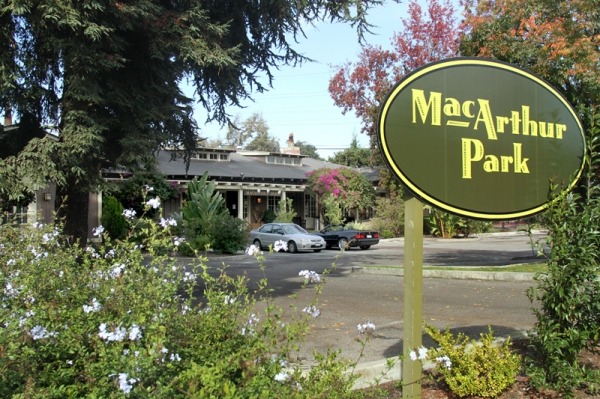


Comments
Downtown North
on Nov 23, 2012 at 11:20 am
on Nov 23, 2012 at 11:20 am
The biggest problem with downtown Palo Alto is all the cars clogging the streets. They cause air pollution, noise pollution, and constant danger to pedestrians. Is there some way to get the cars off of University Avenue? Maybe put big parking lots near each end of the street and let people walk the rest of the way, or drive on Lyton and Hamilton? That would be so much nicer.
Downtown North
on Nov 23, 2012 at 5:31 pm
on Nov 23, 2012 at 5:31 pm
The city needs to work on ways to get around without cars. The city needs to provide carrots and sticks for car alternatives.
One suggestion: turn the neighborhood streets into 2 hour + residential parking areas with the business core remaining as is so shoppers continue to come. The neighborhoods are parking lots for downtown offices, and without charging a truer cost of parking employees will continue to drive to downtown.
The bike lanes are insufficient and not normalizing cycling. People park in bike lanes on University between 101 and Middlefield, or swerve into them to pass turning cars. There is no good bike connection between the bike lanes at University at Middlefield and Lytton at Cowper. Cars park halfway into the bike lanes on Lytton too - and police will not tow cars parked in bike lanes. Cycling isn't safe enough in the downtown corridor to become more normalized and a better alternative.
Downtown Palo Alto is a great, walkable downtown and I agree that it's the best downtown on the Peninsula. But we need to remember that cars serve people and that walkability is more important than drivability.
Duveneck/St. Francis
on Nov 23, 2012 at 7:33 pm
on Nov 23, 2012 at 7:33 pm
I've been saying it for years: Downtown Palo Alto is the best downtown in the Bay Area. The only ones that come close are those of San Mateo and Mountain View. (Berkeley has a large downtown area but it's ridden with vagrants, nomadic youths, and trash. SF and Oakland don't really have "downtown" areas. San Jose's is a joke for a city of it's size.)
I'm one who particularly appreciates the human scale of Palo Alto. I love our parks, quiet streets, and believe that Downtown Palo Alto is not as walkable as it used to be. I wouldn't mind if University were turned into a pedestrian/cycling corridor. (Lytton Avenue seems severely underutilized.)
That said, I personally don't see any problems with the Arrillaga project. It will serve an eye-catching gateway to the downtown area and provide a walkable corridor between Downtown Palo Alto and Stanford Shopping Center. The towers have their own parking lot and are right next to public transit. If University ever gets turned into a pedestrian corridor, the Arrillaga plaza would be a great entryway to Downtown. It would be a great barrier from the bustle of El Camino. (I just hope that the first floor of the towers are reserved for shopping and dining. An observation deck/restaurant on the roof would be nice.)
Of all places in the city, this is the one place where a large project makes sense. Downtown/PA Caltrain is where visitors to the city stop by and many visit both Downtown and Stanford Shopping Center. We also need to keep up with the times and our reputation for the cutting-edge; we're the birthplace of Silicon Valley after all!
ALSO, something needs to be done about Peter Cao from Stanford. He keeps spamming the PA Online as of late.
Charleston Gardens
on Nov 23, 2012 at 7:37 pm
on Nov 23, 2012 at 7:37 pm
Hey Matt, I too am concerned with bicycle safety downtown. The Bryant Street bike boulevard is peaceful, safe and efficient for biking midtown to downtown. Could a similar boulevard that limits car maneuverability be created off University from Alma to Middlefield? And I don't mean adding more traffic circles or bike lanes.
University South
on Nov 24, 2012 at 8:36 am
on Nov 24, 2012 at 8:36 am
University Avenue traffic problems aren't because of a vibrant downtown, it's those cutting through to 101.
Meadow Park
on Nov 24, 2012 at 10:21 am
on Nov 24, 2012 at 10:21 am
"But we need to remember that cars serve people and that walkability is more important than drivability."
for our downtown viabilty drivability is moreimportant. Go ahead and ban cars downtown--kill downtown Palo Alto.
The city and it's residents do not know what they want--they wantbusiness, vibrant shopping areas, visitors spending money etc. but they do not want "traffic". Well tough luck--you want one, you have to have the other. Stop whining and enjoythe fact that people want to come to Palo Alto. Some people in town are never satisfied.
another community
on Nov 24, 2012 at 11:16 am
on Nov 24, 2012 at 11:16 am
@ I drive. I agree with you, to change to less of a car centered world in Palo Alto. We would have to change 50 plus years of thinking, living, working and city planning. Riding some bikes will not help but it is a start.
Another Palo Alto neighborhood
on Nov 24, 2012 at 1:32 pm
on Nov 24, 2012 at 1:32 pm
Gennady Sheyner,
This was an interesting look at Downtown's growing pains. It needs a Part 2 because the article leads one to believe that the source of growth and buzz in Downtown Palo Alto is due to a growing downtown workforce, and unrelated to its residents.
Manager Kennee calls residents "real people" and I'm glad he wants to preserve our ability to chat up our favorite barber and have access to our chewing tobacco, but important data is missing.
Purchasing power of Palo Alto residents has changed since Palo Alto's founding days. Michael Alcheck marvels "it's unbelievable thing that there's six or seven yogurt shops," incorrectly offering the explanation "That offering exists because of the density we have here for the workforce."
In case Alchek hasn't noticed, almost as busy as the yogurt shops these days is Lulu Lemon, and calling the Apple Store "the other side" of Palo Alto, when a resident of Palo Alto founded the company, does not tell the Downtown story very well.
Along with the economic prosperity of Palo Alto residents which has fundamentally impacted downtown, I would include in Part 2 the thriving youth community in Palo Alto. From Stanford to all the Palo Alto schools. Downtown needs to continue to be a safe place for this important part of our community.
Downtown North
on Nov 24, 2012 at 10:06 pm
on Nov 24, 2012 at 10:06 pm
To "I Drive",
I am not arguing we ban cars downtown. I'm arguing that safety and enjoyment of downtown is an important priority.
If we put drivability 100% above walkability, we lose a downtown worth visiting.
Another Palo Alto neighborhood
on Nov 25, 2012 at 5:08 am
on Nov 25, 2012 at 5:08 am
Anything that destroys the feel and view of the area the way Mtn View is doing at San Antonio Center we should fight. Every time I drive by San Antonio and El Camino now, I think, If I were the kind of person who wrote hate mail.... Who let this happen? We shouldn't let it happen to downtown.
another community
on Nov 25, 2012 at 5:28 am
on Nov 25, 2012 at 5:28 am
For those of us former Palo Alto residents of multiple decades ago, that have since left the Bay Area, all that's left are fond memories of the city in which we enjoyed growing-up in. University Avenue was indeed a wonderland with independent stores of every description and two grand theaters offering top-notch films. My most challenging experience while learning to drive was parallel parking there. Oh well, time to move on and not stand in the way of progress, whatever that may bring.
another community
on Nov 25, 2012 at 10:12 am
on Nov 25, 2012 at 10:12 am
Nothing wrong with San Antonio Cetre and what they are doing. Like every shopping center, strip mall or mall they get old, outdated or shoppers leave for new places. Back in the 80'a something needed to be done, also better here then Downtown P.A. Or M.V.
Midtown
on Nov 26, 2012 at 6:27 am
on Nov 26, 2012 at 6:27 am
Downtown PA is dirty, full of traffic and homeless people. We never go there. Much prefer Menlo Park or Los Altos.
Downtown North
on Nov 26, 2012 at 8:05 am
on Nov 26, 2012 at 8:05 am
Please sign my petition: http://www.27university.com
Thanks,
Martin
Registered user
digital editor of Palo Alto Online
on Nov 26, 2012 at 10:15 am
Registered user
on Nov 26, 2012 at 10:15 am
The following comment was moved from a duplicate thread:
Posted by try visiting Castro in MV, a resident of the Duveneck/St. Francis neighborhood, on Nov. 24, 2012, at 7:51 p.m.:
Mr Keene should get out more. A simple visit to Castro Street in Mountain View on any weekend night -- indeed, any night -- will demonstrate substantively what the best downtown on the Peninsula looks like. The MV theater for the Performing Arts is only one reason for MV's downtown vitality. Yes, I don't want the skyscrapers in PA which MV has. And yes, MV is a bigger town, with more sales revenues from large, internationally-iconic companies. Nonetheless, Castro St should be the goal, in terms of independent shops (not just mostly restaurants) which residents want to visit, again and again.
{a PA resident}
Stanford
on Nov 26, 2012 at 11:37 am
on Nov 26, 2012 at 11:37 am
Wow, Martin, 140 signatures in 2-3 months.
Maybe you should revise your petition--the election is over and your comparisons of the potential loss of a view (which was never guaranteed to you) with the taking of a life/home/livelyhood are beyond ridiculous.
another community
on Nov 26, 2012 at 11:39 am
on Nov 26, 2012 at 11:39 am
Both Downtowns are different, shopping patterns were different. While PA has Stanford at the end of University Ave, Castro At had the Navy. Both place have lost retail to the shopping centers that also took with them the shoppers. I remember in the late 70s the empty feeling of Castro St. Both grew different, needs both a strong local base, stores and services but places for companies to grow.
Another Palo Alto neighborhood
on Nov 26, 2012 at 11:59 am
on Nov 26, 2012 at 11:59 am
Views of the foothills provide a backdrop that makes our city truly beautiful. Mr. Areillaga's megalomanic pretended philanthropy is an excuse to build a towering monument to himself. The towers will obscure those magnificent views which make our downtown so beautiful.
This is no "gateway" design. It will create an 11-story wall between downtown and the natural backdrop we are blessed to enjoy. The project shows extreme disregard for environmental context. Coucnil, please put a stop to it now! Don't waste another nickle on this until something reasonable is on the table.
Midtown
on Nov 26, 2012 at 12:57 pm
on Nov 26, 2012 at 12:57 pm
One way to mitigate University Ave traffic would be to follow the lead of Boulder Colorado, where 30 years ago they made their downtown main street into a pedestrian zone and made the street on either side (here lytton and hamilton into one way streets (this makes a bypass where the lights can be timed to keep traffic moving). Result is the most dynamic and exciting downtown that I am aware. This puts the parking in garages on the edges, makes the mainstreet (university) into a park with walkers, outdoor eating, etc.
Leland Manor/Garland Drive
on Nov 26, 2012 at 1:39 pm
on Nov 26, 2012 at 1:39 pm
@Walkable downtown: THANK YOU. My daughter is a sophomore at CU Boulder, and walking Pearl Street is one of my great joys when visiting. My husband and I often comment that Palo Alto should try something similar. We should consider closing University Avenue to cars, repaving the street with brick, re-landscaping with large planters and sculpture throughout, and allowing the restaurants to serve further out onto the plaza. It would make Palo Alto a much more livable and walkable place. Pearl Street is jammed every night with pedestrians, shoppers and diners. It is a lively place for street performers, too.
Oh, I can hear the naysayers already: "vagrants" "homeless" "dirty" "crowded". It's easy to say no. Saying yes is much more challenging and complicated. For those of you praising Castro Street in Mountain View and downtown Redwood City and San Mateo, just think what a difference this would make for our Palo Alto. A positive difference!
another community
on Nov 26, 2012 at 4:31 pm
on Nov 26, 2012 at 4:31 pm
Turning University Ave into a Pedestrian mall would be good. Grass, benches and outdoor seating under the lights with the stars. University Ave is not Castro St not would I expected to be. University Ave needs to be Palo Alto.
Another Palo Alto neighborhood
on Nov 26, 2012 at 4:39 pm
on Nov 26, 2012 at 4:39 pm
We should be taking the example of Castro Street for California Avenue.
@Garrett from another community -- what's wrong with San Antonio center is not that they tore down the old, which I applaud, it's that they decided to build the new so ugly/tall that sunlight and views of the hills are completely gone, and to build right out to the street so that traversing El Camino is now the way of an urban tunnel. It may not affect your quality of life, but it does mine, and many other people's who like me, spend so much time in this neck of the woods. That's why there is thing thing called zoning, because there will always be people like you who think your making a few extra dollars is more important than negatively impacting everyone else's quality of life.
Which is why, again, if I were inclined to send hate mail, the Mtn View city counsel and planning would be recipients. I can't say what I'm thinking here, I will be censored.
Another Palo Alto neighborhood
on Nov 26, 2012 at 4:41 pm
on Nov 26, 2012 at 4:41 pm
Also applaud the "walkable University" idea.
Palo Verde
on Nov 26, 2012 at 7:54 pm
on Nov 26, 2012 at 7:54 pm
But stars in the sky visible from University Avenue? You can't be Sirius.
Downtown North
on Nov 26, 2012 at 10:38 pm
on Nov 26, 2012 at 10:38 pm
Nobody wants to go downtown anymore -- it's too crowded
another community
on Nov 27, 2012 at 12:19 pm
on Nov 27, 2012 at 12:19 pm
I have lived in places where views of mountains, oceans, landmarks are blocked by other buildings, trees, houses or whatever was there. We live in Urban Area, if you want a view of the hills, mountains. We should remove 75 percent of buildings, trees, fences anything that can block the view
Midtown
on Nov 27, 2012 at 12:27 pm
on Nov 27, 2012 at 12:27 pm
Again, in the interest of full disclosure I'm a former mid-towner.
Boy, count your blessings!
Palo Alto has fewer "problems" than most cities of 60,000 in America (compare to similar sized cities in Northern Ohio or even closer by---Nevada (Henderson and North Las Vegas).
An excellent read that details Palo Alto's superior position economically is "Coming Apart" by Charles Murray (NO, not the one that attended Cubberley in the mid-60's!).
Murray correctly lists 94301 as one of the nation's "Super Zip Codes" (along with Belmont, Mass. the centerpiece of the study and coincidentally the home of M. Romney.
The parking and other assorted minor problems Palo Alto survives are ones most similar sized cities in America would die for.
Another Palo Alto neighborhood
on Nov 27, 2012 at 1:07 pm
on Nov 27, 2012 at 1:07 pm
w. dean
It may be fair to say that Palo Altans count their blessings every day. We're facing an issue where developers are pushing to count the cash and power that goes with owning in a "Super Zip Code."
Residents are constrained to stay within building codes, bring in a ton of value to the city with tax dollars, property taxes, retail, and supporting the schools which add to the super zip code value. Developers are not as profitable. The innovation from private people out of a garage have resulted in more innovation and growth than any downtown development.
So, I don't think Palo Alto is a nice place by coincidence, but by design. The 50 foot height limit, and a slow growth approach has been a success, and no case has been made to change this.
Growing pains will need to be dealt with very carefully, to resist the extremely cheap proposals from developers. Developers should instead expect to pay an extremely high price for a super zip code, no special deals.
Or they should go to Henderson and North Las Vegas for the deals.
Menlo Park
on Nov 27, 2012 at 3:52 pm
on Nov 27, 2012 at 3:52 pm
@walkable one of the secrets of Boulder's success is that the money from parking also goes to pay for shuttles and transit passes and carpool programs. As of 2008, only 54% of employees drove to work, down from 61% in 1990. Palo Alto could do something similar, which would help relieve the pressure on traffic and parking.
University South
on Nov 28, 2012 at 10:39 am
on Nov 28, 2012 at 10:39 am
I keep hearing John Arrillaga referred to as a "philanthropist". If he really were one, he would forget about the highly profitable office towers and instead buy the Varsity, restore and remodel it as a theater, and donate it to the City.
Philanthropist? Naaah. Just another rich guy with piles of money and an insatiable appetite for more.
Stanford
on Nov 28, 2012 at 10:54 am
on Nov 28, 2012 at 10:54 am
"I keep hearing John Arrillaga referred to as a "philanthropist". If he really were one, he would forget about the highly profitable office towers and instead buy the Varsity, restore and remodel it as a theater, and donate it to the City.
Philanthropist? Naaah. Just another rich guy with piles of money and an insatiable appetite for more"
Comments from Carol K, like the one above really serve no useful purpose--disagree if you want with his plans--but do not attack the genrosity of this man
Web Link
"Arrillaga gives $100 million to Stanford in largest single gift ever from individual"
"A longtime Stanford supporter, Arrillaga has funded and overseen the construction of several campus buildings: the Arrillaga Family Recreation Center, the Arrillaga Family Sports Center and the Frances C. Arrillaga Alumni Center, which is named in memory of his late wife."
What have you done for the world, Carol K.?
Another Palo Alto neighborhood
on Nov 28, 2012 at 6:44 pm
on Nov 28, 2012 at 6:44 pm
needless,
I don't agree with Carol when she maligns the guy personally, but the 27 University project should receive all the criticism it deserves. Very objectively, you could even say that the 100 million to Stanford could be somehow related to the 27 University project?
Anyway, you really think it's ok to elevate Mr. A to super human status because of his 100 million donation to Stanford, and ask Carol and the rest of us mortals to bow down in submission?
Duveneck/St. Francis
on Nov 29, 2012 at 12:42 am
on Nov 29, 2012 at 12:42 am
@Yogi, think about what you saying here, "Nobody wants to go downtown anymore -- it's too crowded."
another community
on Nov 29, 2012 at 10:52 am
on Nov 29, 2012 at 10:52 am
It's "generosity" when you've got so much more than you could possibly spend? Giving gives you a chance to run a bunch of things, throw your weight around. Sometimes the end result is a thing that Stanford, after a handful of years, won't want any more, and your gift gets submerged under some more recent givers gift.
another community
on Nov 29, 2012 at 10:54 am
on Nov 29, 2012 at 10:54 am
It's "generosity" when you've got so much more than you could possibly spend? Giving gives you a chance to run a bunch of things, throw your weight around. Sometimes the end result is a thing that Stanford, after a handful of years, won't want any more, and your gift gets submerged under some more recent giver's gift.
correction
another community
on Nov 29, 2012 at 2:28 pm
on Nov 29, 2012 at 2:28 pm
Also remember University Ave greater downtown Palo Alto still is sought after address for offices, retail and a place to live. Regardless of 27 University or any of the gateway buildings. The only problem is keeping the rates so small retail businesses can open, grow and remain.
Downtown North
on Dec 1, 2012 at 9:46 pm
on Dec 1, 2012 at 9:46 pm
Mr.Recycle:
"Yogi" was riffing on Yogi Berra's famous quote "Nobody goes there anymore. It's too crowded." - he knew exactly what he was saying.